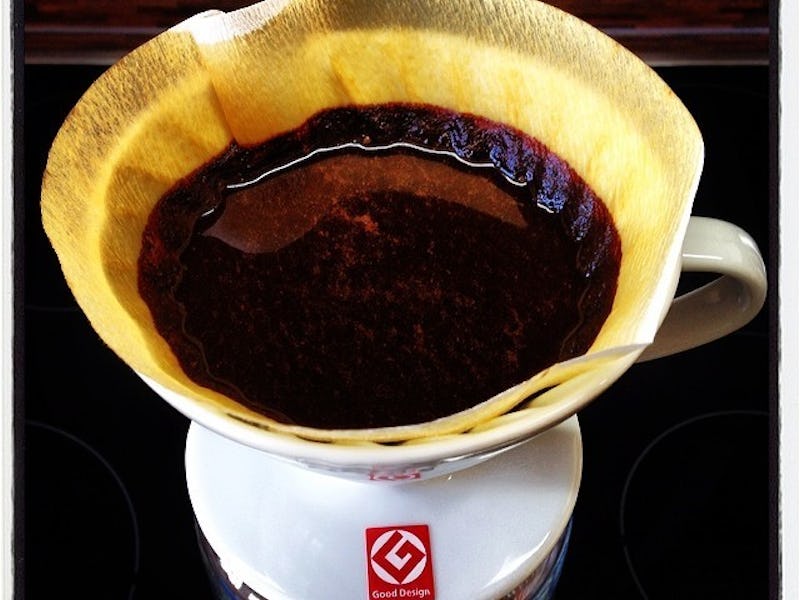The Difference Between Iced Coffee and Cold Brew, Explained
No, cold brew isn’t just expensive iced coffee.

It’s getting hot and sticky out, and people all over the place are getting swept up in the cold-brewed coffee craze now that it’s too hot for a regular cup of joe.
To the casual observer, it seems like the only difference between iced coffee and cold brew is just a couple bucks. But there’s actually more to it than that.
The name cold brew is actually a misnomer. The water that you use doesn’t actually need to be cold; it’s just not conventional coffee that gets poured over ice. What it boils — or rather doesn’t boil down to — is that the caffeine, sugars, and flavor of the coffee beans are extracted using time rather than heat.
When you’re making coffee, or really any other chemical solution, the chemical reaction is driven by heat. The same goes for increasing the solubility of solutions like coffee. That’s why warm water can dissolve more salt than cold water — because there’s no heat involved in the process of cold-brewing coffee, fewer of the compounds in coffee beans are actually extracted.
Many of the various acids, flavor, and caffeine found in coffee is better extracted at a temperature of roughly 200 degrees Fahrenheit, or the temperature at which conventional coffee is brewed. This is why a pot of hot coffee, even when poured over ice, is described as more full-bodied and has a far more noticeable aroma than a cold brew. It’s also why hot coffee pulls more caffeine out of the coffee bean. Thanks to acid not being extracted at lower temperatures, hot coffee tastes more bitter than cold brew.
The increased temperature of hot coffee also increases the volatility — how readily a chemical will evaporate — of some of the compounds pulled from the bean, which is why coffee tends to taste worse the longer it sits around.
To make cold brew, the coffee is steeped for much longer than it takes to make hot coffee. Most people recommend letting it sit for at least 12 hours and no more than for 24. This yields a potent, concentrated brew that’s less flavorful but smoother-tasting than hot (or iced) coffee. But because this initial product is so highly concentrated to the point of being nearly undrinkable, the beverage that you actually drink and call cold brew is actually a mix of this concentrate cut with water, sometimes with some milk thrown in, too.
This results in a drink that’s smoother and less acidic than hot coffee, but also less full-bodied because of the missing flavors. That increased smoothness is why some consider cold brew to be the craft beer of coffee.
And while the decreased brewing temperature means less caffeine, cold brew coffee is actually more concentrated than hot coffee because it requires less water. So, because you end up drinking more of the brew itself, you actually get more caffeine per drink — a Starbucks cold brew has 200 milligrams of caffeine compared to the 110 milligrams found in a bottle of iced coffee. These numbers reflect the typical difference between the two; based on how cold brew coffee is cut, you can get two to two-and-a-half times the coffee in a cold brew than in hot coffee.
While many cold brewers say that longer preparation time increases the amount of caffeine extracted, it has more to do with the type of bean you use. Because caffeine is extracted early in the process, adding extra hours to steep time won’t do anything.
It all comes down to this: If you’re half-asleep and looking for a quick wake-up jolt, cold brew might be the best choice for you, as long as you thought ahead and got it started.